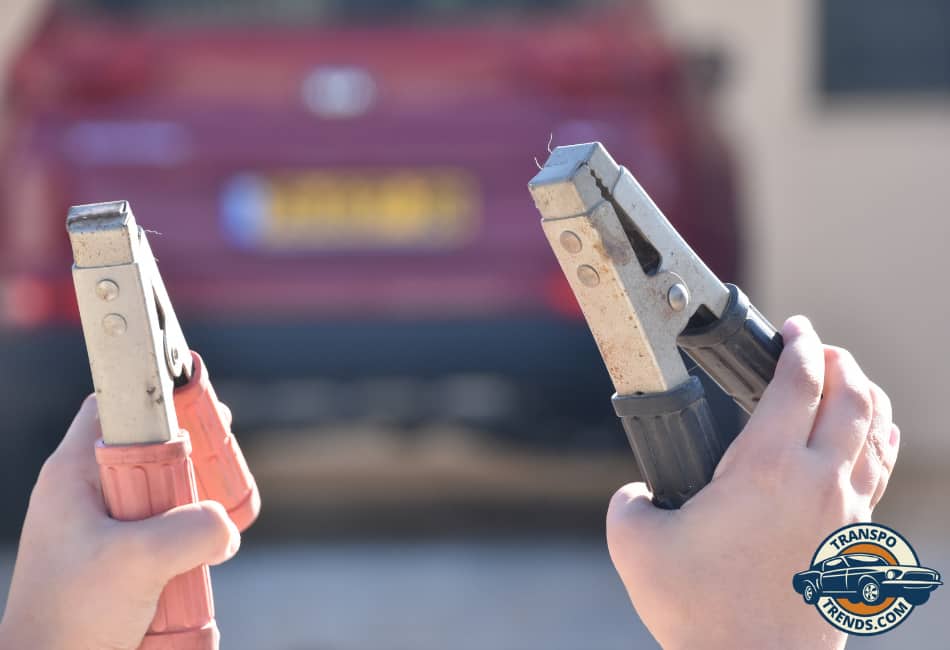Jump-starting a car can be an invaluable resource when you find yourself stuck with a dead battery.
However, it’s important to take the necessary precautions and follow proper procedures in order to avoid potential risks and consequences.
As an experienced mechanic, I have seen firsthand what can happen if jump-starting is done incorrectly.
In this blog post, we will explore nine possible consequences that could arise from incorrect jump-starting of a vehicle.
By understanding these risks, you’ll be better equipped to protect your car and yourself from any unnecessary damage or accidents.
So let’s dive into the world of improper jump-starting and learn how to prevent such pitfalls.
Brief Explanation of Jump-Starting a Car
Jump-starting a car is the process of using another vehicle’s battery to provide enough electrical power to turn on your car’s engine.
The battery of the donor vehicle is connected to the dead battery via jumper cables; this allows electricity to flow into the depleted battery, allowing it to start.
It is important that proper safety precautions are taken in order to avoid any potential risk of injury or damage.
9 Things That Happen When You Jump-Start a Car the Wrong Way
1. Reversed Polarity
Reversed polarity occurs when the jumper cables are connected to the wrong terminals on the battery, resulting in an electrical current flowing in the opposite direction of the intended.
This can be caused by improper placement of the cables, an incorrectly marked battery terminal, or even a damaged cable.
Another thing about reverse polarity is that it can cause sparks to fly, resulting in a potential fire hazard.
2. Sparking and Short Circuits
One of the major risks posed by incorrect jump starting is sparking and short circuits. When jumper cables are connected improperly or if there’s an issue with either battery, sparks may occur as electricity flows through the cables.
This spark has enough energy to cause significant damage to any nearby electronic components, such as wiring harnesses, fuses, and relays – all essential parts for keeping your vehicle running smoothly.
It’s also important to note that even though these sparks may be small in size, they still pack enough power to start an electrical fire if not addressed quickly enough.
3. Overheating the Battery
Another consequence of incorrect jump starting is overheating of the battery itself due to excessive amperage.
The battery is designed to handle only a certain amount of electrical current, so when too much electricity is pushed through the cables, it can cause the battery to overheat and eventually fail.
In extreme cases, this could result in the release of hazardous chemicals that are stored inside the battery, creating a serious safety hazard.
4. Electrical Damage to the Car’s Computer System
Incorrect jump-starting can also lead to electrical damage to the car’s computer system and other sensitive electronics.
The sudden influx of electricity may cause the car’s circuitry to malfunction, resulting in random errors that could appear while driving or even complete system failure.
This could be a costly repair and may require professional assistance in order to get the vehicle back on the road.
5. Explosion of Battery Acid
Incorrect jump-starting can also lead to an explosion of battery acid, which is highly corrosive and toxic when it comes into contact with skin or eyes.
This is caused by excessive amperage flowing through the battery, which can cause it to overheat and eventually rupture, releasing its contents.
It’s important to wear protective gear when attempting jump-starting in order to avoid injury from any potential acid explosions.
6. Damage to the Alternator or Starter
The alternator and starter are two key components of your car’s electrical system, and improper jump-starting can cause damage to either one.
When too much electricity is pushed through the cables, it can overwhelm the alternator or starter and cause them to fail prematurely.
This could be a costly repair and may require professional assistance in order to get the vehicle back on the road.
7. Damage to Other Electrical Components
Incorrect jump-starting can also cause damage to other electrical components within your car’s system, such as wiring harnesses, fuses, relays, and more.
The sudden influx of electricity can cause these components to malfunction or even fail completely, which can lead to expensive repairs and potentially dangerous situations if not addressed quickly.
For these reasons, it’s important always to be aware of the risks posed by incorrect jump-starting before attempting to do so.
8. Damage to the Battery
Finally, incorrect jump starting can also cause significant damage to the battery itself.
The sudden influx of electricity can cause the internal components of the battery to overheat and eventually fail, resulting in costly repairs or possibly a complete replacement.
It’s important to take all necessary precautions when attempting to jump-start a car in order to avoid any potential damage to the battery.
9. Melting Wires and Cables
Incorrect jump-starting can also lead to the melting of wires and cables, which can cause significant safety hazards.
The sudden influx of electricity can generate large amounts of heat that can melt any exposed wiring or connectors, creating a potential fire hazard.
It’s important always to use insulated cables when attempting to jump-start a car and to be aware of any potential melting wires or cables that could present a danger.
How to Avoid the Risks of Jump-Starting a Car
- In order to avoid the risks associated with jump-starting a car, it’s important always to follow safety procedures and take all necessary precautions.
- It’s also a good idea to invest in emergency roadside assistance services so that you can call for help if needed. This will ensure that an experienced professional is there to safely and correctly jump-start your car.
- If you’re still unsure how to jump-start a car, it’s best to contact an automotive technician for help or take the vehicle to a professional auto shop. This will ensure that the job is done right and that there is no risk of damaging your vehicle or yourself.
By following these simple precautions, you can avoid the risks of incorrect jump starting and getting back on the road safely.
Conclusion
Jump-starting a car can be a risky process if not done correctly, so it’s important to take all necessary precautions when attempting to do so.
Incorrect jump starting can cause damage to the battery, alternator, starter, and other electrical components, as well as create potential fire hazards due to melted wires or cables.
In order to avoid these risks, it’s best to invest in emergency roadside assistance services or contact a professional automotive technician for help if you’re not sure how to jump-start your car properly.
By taking all necessary precautions and following safety procedures, you can ensure that your vehicle is safely and correctly jump-started without any potential risks.

